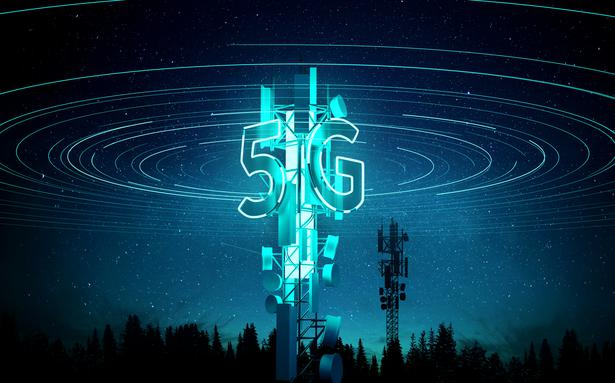
Whatsapp 98103-86285 For Details


Why in
news?
·
India
is preparing to auction off about 72 Ghz of airwaves to rollout 5G services in
the country.
·
However,
the infrastructure needed for such a rollout requires existing radio towers to
be connected via optical-fibre cables.
· The work of connecting the towers could prove to be a huge challenge for the country.
What is
fiberisation?
·
The
process of connecting radio towers with
each other via optical fibre cables is called fiberisation.
·
It
helps provide full utilisation of network capacity, and carry large amounts of
data once 5G services are rolled out. It will also aid in providing additional
bandwidth and stronger backhaul support.
·
The
backhaul is a component of the larger
transport that is responsible for carrying data across the network. It
represents the part of the network that connects the core of the network to the
edge.
·
As
a result, fibre backhaul remains an important part of transport across all
telecoms.
Optical
media:
·
Fibre-based
media, commonly called optical media, provides almost infinite bandwidth and
coverage, low latency and high insulation from interference.
·
With
5G, it will also be necessary to increase the density of mobile towers to
provide better coverage to consumers and businesses. This calls for increased
requirements for fibre deployment.
Where does
India stand with respect to tower fiberisation?
·
To
transition into 5G, India needs at least
16 times more fibre, according to estimates by STL, a technology company
specialised in optical fibers and cables.
·
In
India, currently only 33% of the towers are fiberised, compared to the 65%-70%
in South Korea and 80%-90% in the U.S., Japan and China, according to a 2021
report by India Infrastructure Research.
·
The
fibre kilometer (fkm) per capita in
India is lower than other key markets. Ideally, a country needs 1.3 km of
fibre per capita to ensure good fiberisation. India’s fkm is just .09 compared to 1.35 in Japan, 1.34 in the U.S.
and 1.3 in China, the report noted.
· There is also a need to increase data capacity in the fiberised towers. These tower sites which are connected via fibre are called fibre point of presence (POP).
· Currently these fibre POPs at a tower site can handle data at one to five Gbps speed.
What are
the challenges?
·
To
reach the targeted level of fiberisation, India requires about ₹2.2 lakh crore
of investment to help fiberise 70% towers. About ₹2.5 lakh crore will be needed
to set up 15 lakh towers in the next four years, according to estimates by the National Broadband Mission and Cellular
Operator Association of India (COAI).
·
Government
programmes like BharatNet and Smart Cities will further add to the demand of
fibre deployment, necessitating a complete tower fiberisation.
·
Indian
Prime Minister in his 2020 Independence Day speech, laid out the vision to
connect every village in the country with optical fiber cable (OFC) in 1,000
days.
·
To
achieve that vision, cables must be laid at a speed of 1,251 km a day, around
3.6 times the current average speed of 350 km a day.
Right of
Way (RoW) rules:
·
One
of the biggest issues in the way of fiberisation remains the Right of Way (RoW) rules. The Indian Telegraph RoW Rules 2016 were gazette
notified by the Department of Telecommunications (DoT), Govt. of India on
November 15, 2016.
·
The
rules aim to incorporate nominal one-time compensation and uniform procedure
for establishment of Overground Telegraph Line (OTL) anywhere in the country.
·
While
all States/UTs are required to implement these rules, they are not in complete
alignment and still require certain amendments to align. Further, several districts and local bodies have not
agreed to the RoW policies as notified in those respective States. These
places are following their own bylaws overriding the State RoW policies aligned
with the RoW rules, 2016.
·
Other central Ministries like the Ministry of
Road Transport and Highways, National Highway Authority of India, Ministry of
Environment and Forests, Ministry of Railways, Ministry of Defense, Ministry of
Civil Aviation, Department of Post, etc. have
not yet adopted these Rules, citing their own departmental rules.
GatiShakti
Sanchar online portal:
·
DoT’s
GatiShakti Sanchar online portal was highlighted as a way to simplify RoW
approvals and help deploy cables for 5G.
·
This
initiative will enable centralisation of RoW approvals for telecom
infrastructure projects, including 5G and help operators to deploy required
infrastructure for the upcoming 5G rollout in a timely manner.
·
In
October 2021, the DoT revised the RoW rules, making it easier to install aerial
optical fibre cable in the country. This can enable infrastructure providers to
deploy cables overhead via street light poles and traffic light posts.
Can
satellite communication help in 5G deployment and improve network backhaul?
·
Processing
power needs to be distributed from centralised data centres to edge servers
closer to users.
·
Satellite
communication can provide high-capacity backhaul connectivity to large numbers
of edge servers over wide areas, thereby complementing the terrestrial network
with cost-effective scalability.
·
Satellite
communication can facilitate 5G broadband connectivity to underserved areas
where it is not feasible to deploy terrestrial infrastructure like remote
villages, islands or mountainous regions.
·
Satellite-based
networks are the only means for delivering 5G broadband to users on board
moving vessels, including cars, ships, airplanes and high-speed trains. In
addition, space-based broadcast capabilities support over-the-air software
updates for connected cars anywhere in the world.
·
Space-based
backhaul will also provide disaster relief services, support emergency response
teams as well as deliver broadband connectivity for one-off entertainment or sports
events anywhere in the world.
Way
Forward:
·
The
low-Earth Orbit (LEO) satellites will be well-suited to offer not only
backhaul, but also direct connectivity.
·
As
the 5G standard is adopted, new markets will open up for satellite operators,
including IoT, private 5G, and cellular backhaul for densification to enable more
cell sites and edge devices.